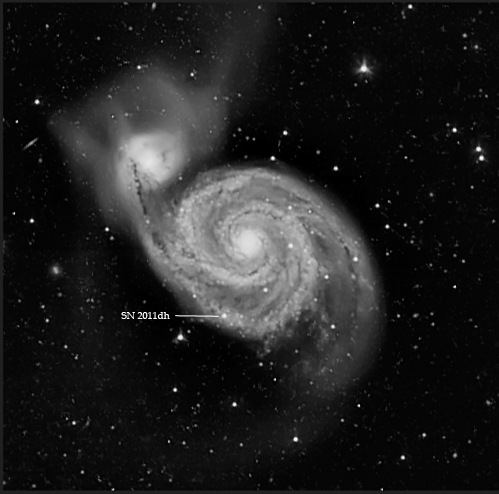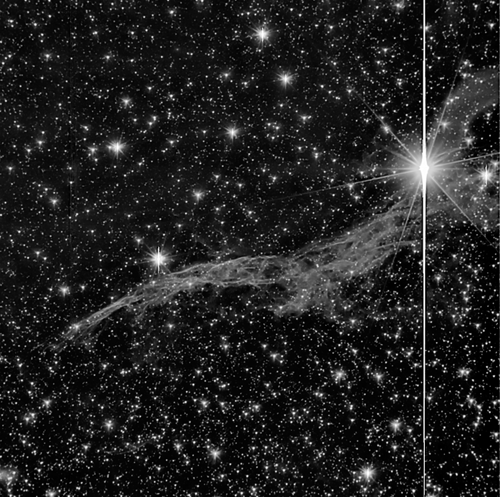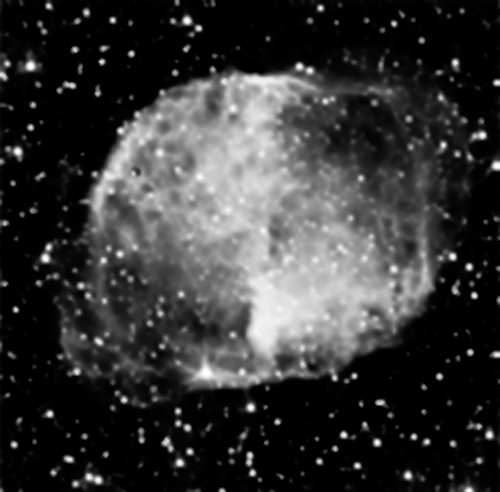EPOXI
Two intriguing investigations -- One flight-proven spacecraft
Gallery
Deep Sky Feasibility Demonstration
In November 2010, the Deep Impact Flyby spacecraft flew past comet Hartley 2. This was the spacecraft's second flyby of a comet. And as in 2005, it got some spectacular images of a comet nucleus up close. With extended mission ideas being proposed, EPOXI Spacecraft Team Chief Steve Wissler was curious about whether the MRI could be used to take images of something other than a comet nucleus for which it is optimized. It is a slower (f/17) optical system than what would normally be used for imaging traditional astronomical targets. The filters are also designed for comet imaging -- there are no traditional RGB filters. Nevertheless, Steve picked a few astronomical targets of different types and worked with Ken Klaasen and Dennis Wellnitz to set up the observations. Steve is hoping to set up some educational outreach activities where students could submit proposals for observations, and once the images are on the ground and calibrated, the students could do the final processing.
Another purpose for the observations was training. Steve has some new members on his team, and without an active science mission, he needed something for the experienced members (who were forgetting how do do things) and the new members to use for training purposes.
 M 51 with SN2011dh
M 51 with SN2011dh
Click for original size image. [Note that this image was taken at the 512 subframe size, so it is about the same size as depicted here.]
Or a .tif version
 NGC 6960 The Veil Nebula
NGC 6960 The Veil Nebula
Click for original size image. [Note that this image was taken at the 1024 full frame size, so it is bigger than depicted here.]
Or a .tif version
 NGC 6960 The Veil Nebula
NGC 6960 The Veil Nebula
Click for original size image. [Note that this image is a stitch of two full frame images, so it is bigger than depicted here.]
Or a .tif version
 M 27 The Dumbbell Nebula
M 27 The Dumbbell Nebula
Click for original size image. [Note that this image was taken at the 256 subframe size, so it is smaller than depicted here.]
Or a .tif version
Caption: These images were acquired by the EPOXI mission as part of an operational training exercise. The targets were selected because they were easily accessible from the spacecraft’s current orbit using the Medium Resolution Imager.
Technical Details:
| M51 | NGC6960 | M27 | |
| frame | 512 | 1024 | 256 |
| filter | 1 (clear) | 1 (clear) | 1 (clear) |
| exposure | 7x17min | 10x17 | 7x17 |
| comments: | Processing done by Steven Wissler, Spacecraft Team Chief for EPOXI, who is also a very accomplished astrophotgrapher. Images stacked in Nebulosity using 1.5 sigma to remove cosmic rays. Stretching and final processing in Photoshop. | ||
Table 1: Table containing technical details about the three images taken with the Deep Impact Flyby spacecraft's MRI camera during a post-EPOXI mission operational test.
Credit: NASA/JPL-Caltech/UMD
Deep Sky Challenge
We've made the data available for you to process! Get the files and details.
